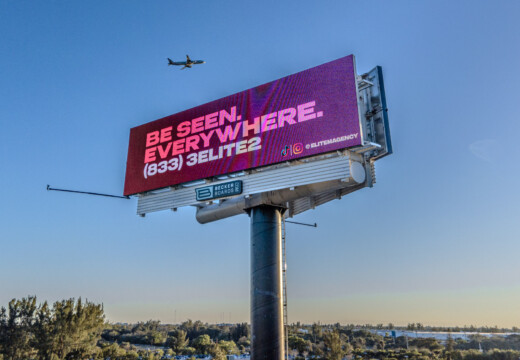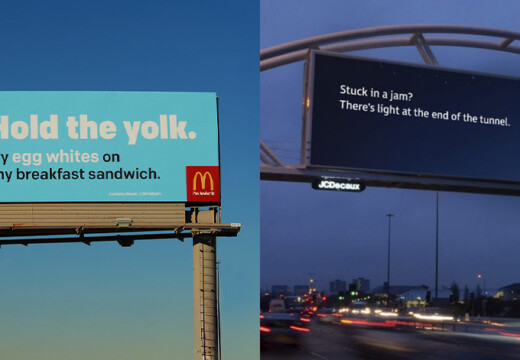How to Advertise So that Your Brand is Chosen
Effective advertising is a long game, considering that hardly anyone is going to buy from you the first time they see your advertisement, no matter how captivating it is. While that may seem bleak at face value, fret not, as you can still embed your brand within your target customers’ memories and spur them into buying from your brand when they are ready to jump into the market.
To do so, you’ll need to ensure that you’re delivering qualified impressions (QI) to your customers. As mentioned in a previous post, a qualified impression is a metric denoting an impression delivered to a potential customer for the sixth time. Consumers will not only remember your brand, but also will have developed feelings for it once they’ve hit that 6th impression mark, and will therefore likely be ready to buy.
After all, according to the Rule of 7, customers tend to buy from businesses after having seen their ads 7 times. Thus, after having seen it at least six times (and beyond), you can rest assured your prospects are well nurtured and ready to make a buying decision, especially one in which they purchase from your brand.
In this post, we’ll dig deeper into the QI, particularly to teach you how to advertise effectively, that is, how to effectively show your advertisement enough times so that your target audience chooses to purchase from your brand.
Qualified Impression (QI): A Refresher
As our previous blog post explained, the QI is a metric and a standard through which you can classify your most qualified buyers.
Impression numbers six and beyond are deemed qualified impressions because it is at the sixth impression point in the buyer journey in that customers know about your product and have forged an emotional connection with it. At this point, they are ready to make a buying decision and specifically, are most willing to buy from you.
Those who have had less than 6 impressions of your brand’s messaging are usually not ready to buy from you. Instead, they need more engagement and nurturing. In order to best deliver QI, you should not seek to reach your customers through one medium only.
Instead, there are a variety of methods and efforts you should incorporate as you nurture your potential customers further down the sales funnel. With each step that you take in your approach to reach your customers, you are building a foundation of trust. Trust is critical in advertising and marketing, as large, in that it is through trust of your brand that onlookers of ads become paying customers.
The Psychology of Trust and How It Helps Your Brand
Yes, there’s a great deal of psychology in advertising and marketing. When it comes to winning customers over and having them choose your brand over others, you’ll need to abide by what’s known as the psychology of trust.

First off, you’ll need to understand trust in the context of advertising and the broader realm of marketing. When it comes to trusting your brand, a concept also called brand trust, it is defined as the following: the amount of believability your brand has of being capable to deliver on its promises, combined with the feelings of respect and loyalty and respect that your target customers have for your brand.
Trust doesn’t occur overnight. Instead, building trust is a gradual process. In brand trust, there’s what’s known as the psychology of trust, in which building trust occurs in a kind of spectrum. At the early to mid stages of the spectrum, there’s credibility and in the later stages, trust facilitates self-identity.
Credibility is the very core of trust, as it denotes the quality of being believable or worthy of being believed and trusted. Your brand needs to establish credibility in order for your target customers to even consider your brand as a contender for their needs, let alone learn more about what you have on offer.
Self-identification occurs at the end of the brand trust spectrum, and it refers to the attribution of certain characteristics or qualities to oneself. This is to say that at this stage, customers can see your brand as being part of themselves, whether this self-identification falls within their hobbies, lifestyles, goals, needs, etc. Once they self-identify with your brand, your customers have a reinforced sense of trust within it and are ready to buy from you.
Once you’ve fully achieved brand trust, you can then begin working towards customer retention strategies, so that your buyers patronize your brand every time.
How to Advertise to QI Status Customers and those Lower in Rank
We typically break up our proprietary QI metric/standard of customers into three stages of phases. Each of these requires its own nurturing and engagements to gain higher impression status and push customers towards a state of complete trust with your brand. That’s because these different groups of customers are at different stages of the customer buying journey; your ads and other marketing tools need to be appropriate for their particular stage in the buying journey.
Here’s how to advertise to your customers to build brand trust at each stage of the impression count.
- The Lower Tier: 1-3 impressions
- Conduct research on what appeals to your broader target market. This way, you’ll learn about not only what your customers and brand loyalists need, but those who haven’t bought from you yet, but fit your customer profiles or target market.
- Create several preliminary advertisements of your brand for those at this low impression stage.
- Remember that this includes people who have never seen or heard your messaging before as well, so consider your ads as primers: ads meant to put people’s foot in the door in getting to know your brand.
- Consider the other people who may have seen your message a few times. They will require being shown the same messages. If you seek to use other ads, make sure they follow the same theme or message, as this is the early stage of impressions and therefore, this group has low trust and interest in your brand.
- Billboard ads are a strong means of building your brand and forging trust because they are authoritative, and are seen by human eyes (not bots!). Use this method for extended periods of time to move this group to a higher impression status.
- It’s easy to track the QI with billboards, as thousands of people see them each day.
- Be judicious with CTAs! It’s far too early in the buyer’s journey for these customers to buy from you. They certainly don’t trust your brand just yet.
- The Mid Tier: 4-5 impressions
- Continue running your ads for this group.
- Feel free to advertise across different methods, including on DOOH, OOH and digital advertising platforms.
- Digital ad formats include Facebook, Twitter, Linkedin and Google ads
- Consider using ads that speak to different themes, or that sell different products/services/subscriptions.
- Introduce other marketing campaigns and nurture programs, such as content marketing campaigns, emails, social media posts and videos.
- Don’t overuse CTAs! While this group has had more impressions and possible interactions with your brand, they are not nurtured enough to buy. You’d be wasting ad dollars if you, for example, if you are using a digital ad with a $14-dollar CPM to serve a conversion CTA this early in their journey!
- Feel free to advertise across different methods, including on DOOH, OOH and digital advertising platforms.
- Continue running your ads for this group.
- QI (6+ impressions)
- Now, you’re at the point where you can begin to capitalize on your long-running ad campaigns.
- Continue these campaigns and nurturing programs to reinforce the credibility of your brand and to win brand recall from a larger group now receiving QI.
- And finally…since QI customers are prepared to make a buying decision, you can now feel good about introducing more expensive digital forms of advertising to deliver those bottom-of-funnel CTAs.
- Your digital ads and other content should link to a page where customers can buy from you.

Making the Most of QI and Blip
Wrapping things up, you should remember that no one is going to buy from your brand if they’ve encountered your messaging only once. In fact, they are unlikely to buy from you until they are at least six impressions deep and sometimes even more than that.
As you hone your marketing and advertising campaigns to appropriate points along the buyer journey to develop your target market, remember to choose a strong advertising platform to aid your efforts. We suggest beginning with the OOH advertising – a tried and true, and still growing medium. In 2024, 17% of customers are more likely to interact with a brand after being exposed to its billboard.
Blip is a powerhouse of a DOOH (digital out-of-home) solution, as we offer the fastest and easiest solution to run and manage your digital billboards. Our platform enables you to set your budget,your daily schedule and locations in a few short steps. Our intuitive platform includes over 2,000 billboards available throughout the country, which you can target strategically. With the placement of our billboards on busy and high-trafficked highways and the like, it’s a surefire way to reach a broad audience and begin delivering those Qualified Impressions most cost effectively.


